

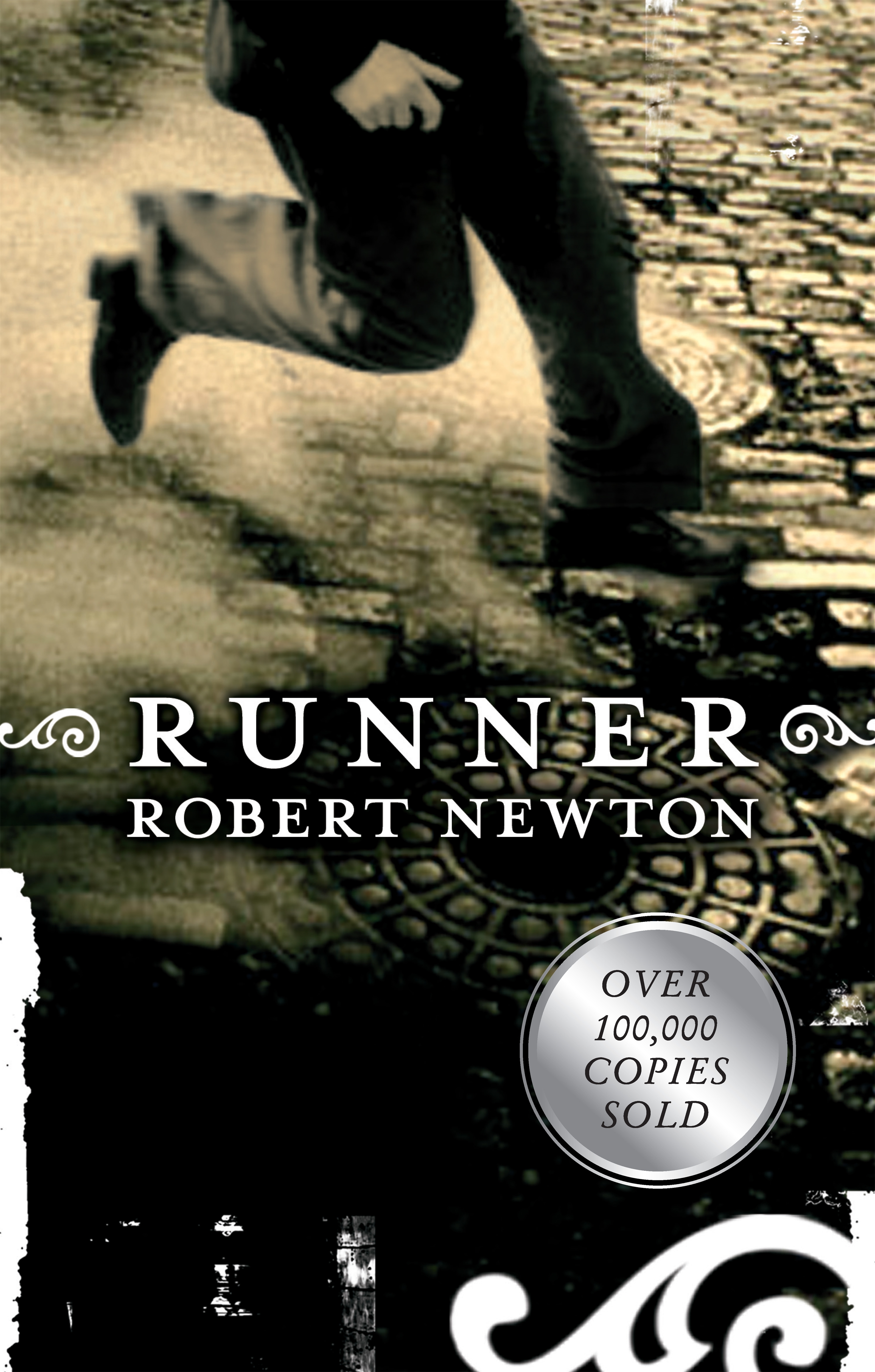
Charlie's father is dead, and although his mother insists he stay in school, Charlie has no patience for the classroom. All he wants is to make money, to give his mother and baby brother a better life. So when he catches the eye of Squizzy Taylor, a notorious mobster, and is offered a job as Squizzy's courier, it doesn't take Charlie long to accept—even if he has to go against his own mother's wishes.
At first, the job's a thrill—running with messages, illegal liquor, whatever Squizzy orders. It fills Charlie with power. But then come the not-so-savoury parts of the job. Collecting Squizzy's debts. Dodging Squizzy's enemies. The very real dangers of the streets. And at some point Charlie has to ask himself—how long before running for a better life means cutting his life short?
Click through the tabs below to find resources to help you with your study of Runner.
Robert Newton answers twelve quick and interesting questions about himself and his work.
This interview features three #LoveOzYA authors: Robert Newton, Nova Weetman, and Lili Wilkinson.

'Squizzy' Taylor was one of the most colourful Melbourne crime figures of the early 20th century. He modelled his criminal style on that of American bootleggers by dressing loudly and moving with authority around Victoria's racetracks and clubs:
Through it all strutted the bumptious Squizzy Taylor who needed no teaching; dressed like a toff in his best broadcloth suit, short black overcoat with fashionable matt-velvet collar, and iridescent silk shirt [...] His flashing gold teeth and enormous diamond tiepin winked the message of his success.
– Hugh Anderson, Taylor biographer
Read more about this famous gangster in the resources below.
Joseph Leslie Theodore (Squizzy) Taylor (1888-1927) criminal, was born on 29 June 1888 at Brighton, Victoria, son of Benjamin Isaiah Taylor, coachmaker, and his wife Rosina, née Jones, both Victorian born. This article describes Squizzy Taylor's life in detail and is a great starting point for learning more about this notorious gangster.
This article includes a number of important public records related to Squizzy Taylor and are excellent primary sources to understand the context of the novel Runner.
This article from a local Melbourne blogger discusses the history of Squizzy Taylor in Richmond, and provides photos of one of the locations he used to run his operations out of.
The life of Squizzy Taylor is intermingled with a longstanding Melbournian voyeuristic fascination of crime figures and their journeys. This article provides an in-depth look at the life of Squizzy Taylor and how it impacted Australian pop culture.
In the early 1920s, Melbourne society was a seething hotbed of entrepreneurial con artists and ambitious personalities, self-made gangsters and amateur film directors. Near the peak of Squizzy Taylor’s notoriety, one such producer-director by the name of Eric Harrison met with Taylor and his then girlfriend Ida ‘Babe’ Pender. He convinced the pair to star in a ‘sporting comedy drama’. At a reported 4500 feet, the final film would have screened at just under an hour, with many of its scenes set at Caulfield and Moonee Valley, in inner-city Melbourne. The film is now lost, but this article describes other films and TV shows which feature the character of Squizzy Taylor.
This article describes the death of Squizzy Taylor.
This article describes in detail the events leading up to Squizzy Taylor's death, and is evidence of how popular gang war stories were at the time.
This interactive website includes video clips, articles and websites that describe Australian life from the 1900s to the 1940s.
This website details some of the main aspects of Melbourne life in the 1910s and 1920s, including the introduction of electricity, the end to Melbourne as Australia's capital, and new leisure activities.
This article gives a brief overview of the history of Melbourne from 1900-1920, and some of the major events and changes to daily life during this period. There are also links to exhibit items from this era.
This website gives a timeline of some of the most significant events in Australia's history from 1910-1920.
The early 20th century was a time of relative calm and global peace. European nations politically and economically expanded into new territories in Asia, the Indies and the South Pacific. France, Germany and Britain arose as pre-eminent superpowers. This European imperial development and expansion came to a dramatic and catastrophic end with the First World War (1914–18).
At the beginning of the First World War, both sides of Australian politics competed to give enthusiastic endorsement for Britain's war effort. In 1914, the Australian Labor Party (ALP) leader and soon to be prime minister, Andrew Fisher, declared Australia would back Britain 'to the last man and the last shilling'. This war tested Australia's national pride and newly established independence. It was a time when both the Anzac legend and a 'national identity' developed. Learn more about this decade at this website, which includes timelines, photos and videos.
With the outbreak of Spanish Influenza in Melbourne in December 1918 people were advised not to panic. Earlier local authorities were aware of the disease in Europe and its devastating effects upon the population so strict procedures had been put in place in order to limit its impact here. As a consequence Melbourne escaped relatively lightly compared to the number of deaths in Europe and America. The exact number of deaths world wide is not known but is estimated as being between 20 and 40 million people. This is more people than lost their lives due to the Great War. Read through this article to learn more about how the Spanish Flu impacted Melbourne.
The 1918 Spanish flu pandemic was the most devastating epidemic in recorded history. Worldwide it is thought to have killed an estimated 50 million people, although some experts suggest the total might actually have been twice that number. The outbreak hit Melbourne in December 1918. Local authorities were aware of the devastating effects of the disease in Europe, and took precautions to limit its impact. This article describes these precautions, as well as the work of nurses at the time, and how the Spanish Flu impacted the daily life of Melbournians.
This newspaper article from 1919 describes the first outbreak of Spanish Flu in Melbourne.
The Spanish flu pandemic emerged at the end of the First World War, killing more than 50 million people worldwide. Despite a swift quarantine response in October 1918, cases of Spanish flu began to appear in Australia in early 1919. About 40 per cent of the population fell ill and around 15,000 died as the virus spread through Australia. This article describes what the flu is, how it spread, what precautions were put in place, and how it impacted Australian society.
Unleashed six months before the end of World War I was declared on 11 November 1918, within a year Spanish flu had claimed the lives of more than 20 million people worldwide. It’s thought that many deaths were due to bacterial pneumonia in lungs weakened by influenza. This article looks at the Spanish flu from a medical perspective and includes lots of photos from 1919.
The Royal Exhibition Building housed the Victorian State Parliament during the war and, as part of the local battle against the post-war influenza pandemic, it was transformed into a Spanish Flu hospital between March and August 1919, treating more than 4000 people. This website describes the role the Royal Exhibition Building played in the Spanish flu pandemic.
Melbourne’s experience of the 1919 Spanish flu pandemic can tell us much about Australian society at the time and has some valuable lessons for our response to the COVID-19 pandemic today. This article looks at the Spanish flu and Covid 19 pandemics, and compares how they both impacted life for Victorians.
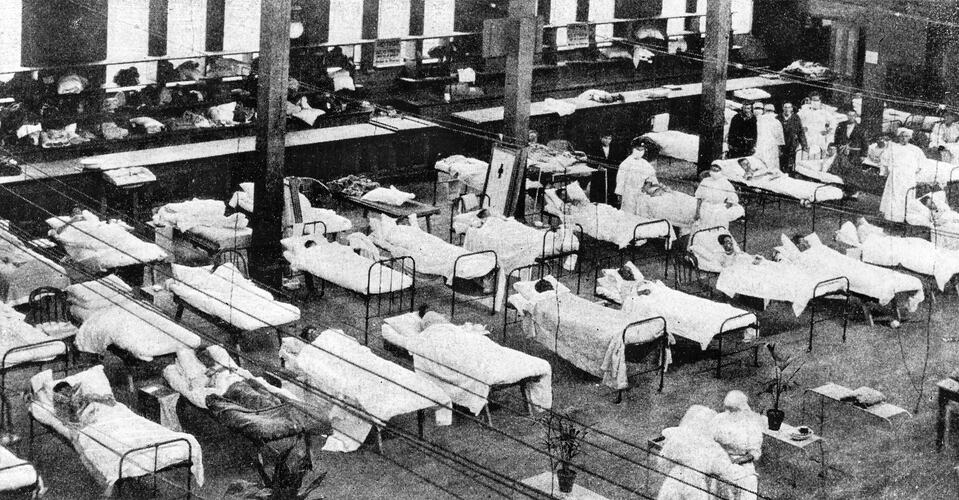
In 1918-19 the 'Spanish' influenza pandemic swept the world. It arrived in Victoria in late January 1919. From February to September 1919 the Exhibition Building in Melbourne was transformed into a hospital as the city's hospitals were unable to accommodate all the patients. The banqueting room and committee rooms were divided into cubicles to accommodate nursing staff, while other nurses slept in a nearby school or on the veranda behind the western annexe. The patients occupied the exhibition halls: female patients between the concert platform and the dome, male patients in the great space beyond. The basement housed a morgue, and outside the area under the grandstand became a laundry. The hospital was capable of accommodating 1500 people and by mid-August 1919 it had treated 4046 cases, 392 of whom had died.
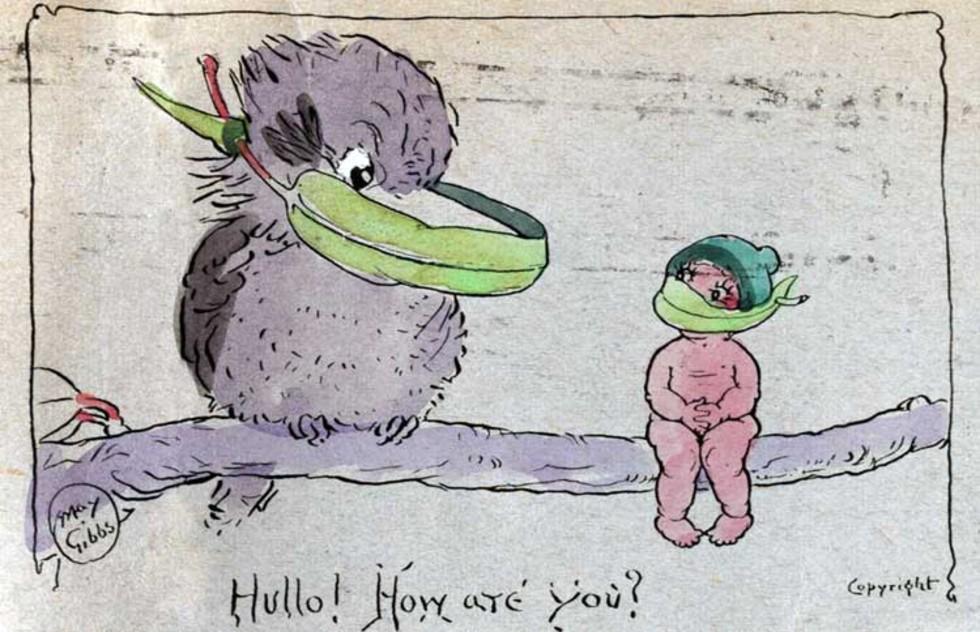
This is an excerpt from a public health poster about the Spanish influenza (flu) pandemic, drawn by children's illustrator and author May Gibbs in 1919. The detail features a gumnut baby and a kookaburra sitting on a branch, with eucalyptus leaves wrapped around their mouths in the manner of surgical masks. Click the link above to learn more about this poster and get more background information about the Spanish Flu.
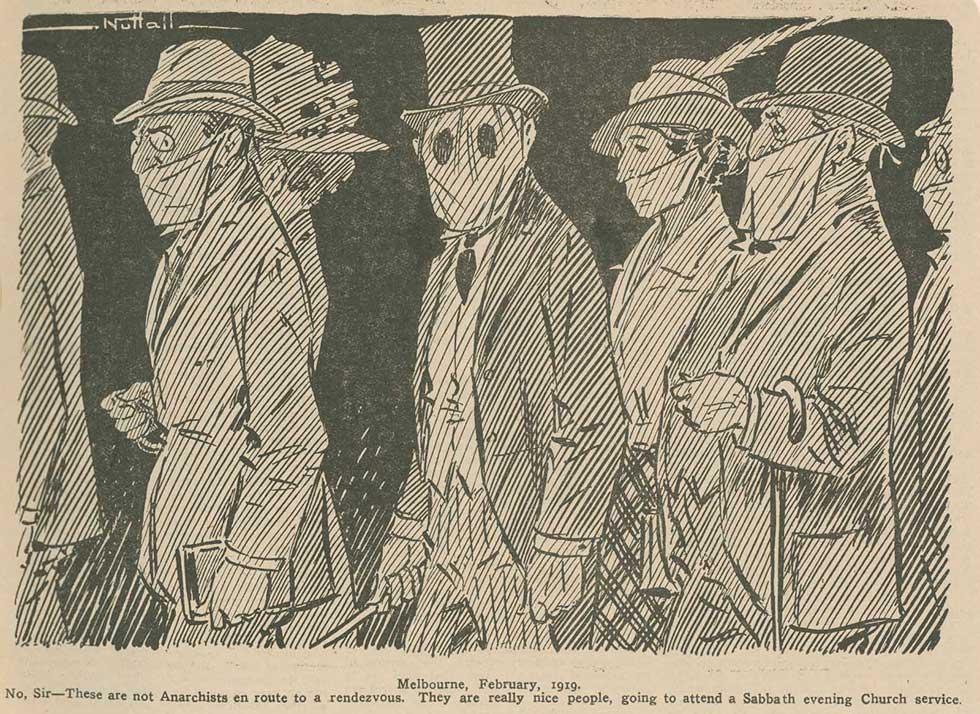
This is a newspaper illustration published in 1919 by cartoonist Charles Nuttall showing seven well-dressed men and women on their way to a church service wearing face masks to protect them against the recent Spanish influenza (flu) outbreak. The caption below the drawing reads, 'Melbourne, February, 1919. No Sir–These are not Anarchists en route to a rendezvous. They are really nice people, going to attend a Sabbath evening Church service.' Click on the link above to learn more about this poster and the impact the Spanish Flu had on Australia.
This website provides a detailed history of the suburb of Richmond, from its precolonial past through to the present day.
Look at much of inner Melbourne today and what do you see? Lots of expensive houses, trendy cafes and shiny offices. But it was a different story decades ago when large swathes of suburbs such as Fitzroy, Collingwood, Richmond, Carlton and South Melbourne were decrepit and destitute. This article includes lots of heritage photos depicting what life was like in Richmond in the early twentieth century.
Richmond, 3 km east of central Melbourne, has been a residential, industrial and residential, and latterly a more residential, suburb. This article describes the history of the suburb, including housing, industry, education, transport, leisure and population numbers.
This website provides information on the different aspects of living conditions in Richmond, including housing, family, childhood, leisure, and work.
As far back as the 1850s, slums existed in inner city Melbourne. Slum dwellers lived a squalid existence. Often, they had no bathrooms, or sewerage. They lived in ramshackle housing, with leaky roofs and holes in the walls. This article describes the slums, including those in Richmond.
This study guide includes chapter by chapter breakdowns of the book, lists of quotes, summary of themes, and quizzes to test your knowledge.
This interactive Google map shows you some of the locations referenced in Runner.
Includes summary of themes, analysis of characters and suggested activities and worksheets.

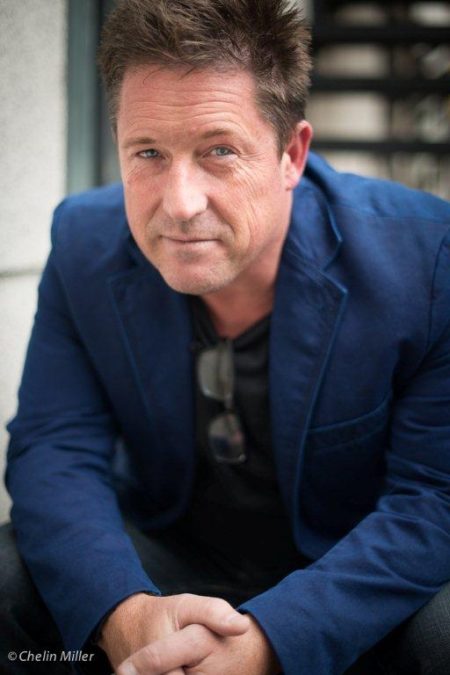
Born in Townsville, Queensland, Robert Newton now works as a full-time firefighter with the Metropolitan Fire Brigade. His first novel, My Name is Will Thompson, was published in 2001. Since then he has written six other novels for young people, including Runner, The Black Dog Gang and When We Were Two, which won the 2012 Prime Minister’s Literary Award for Young Adult Fiction. He lives in Melbourne with his wife and three daughters.
